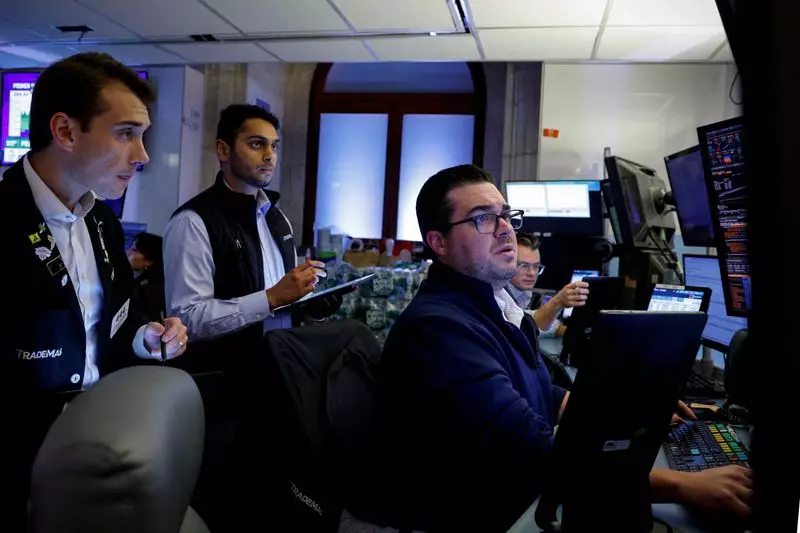On a troubling Wednesday, U.S. stock index futures showed signs of a downward trajectory, signaling investor anxiety spurred by escalating geopolitical unrest in the Middle East, coupled with labor disputes at domestic ports. This unsettling combination has left market participants anxiously awaiting economic data that could provide clarity on the health of the economy and the direction of monetary policies. The S&P 500 and the Nasdaq faced a rough start to the final quarter, reaching levels not seen in two weeks following aggressive actions in the Middle East and a notable sell-off in higher-risk assets.
The backdrop to these stock market fluctuations involves a heightened military exchange between Iran and Israel, where retaliatory missile strikes have further inflamed tensions. Following Iran’s missile attacks, both Israel and the United States have vowed to pursue their interests with force if necessary. This political skirmish has profound implications not just for stability in the region, but also for oil prices, which soared by more than 2.5% as traders braced for potential supply disruptions. Not surprisingly, oil stocks like SLB and Occidental Petroleum saw an uptick of roughly 2% in premarket trading, reflecting these heightened crude prices.
Interestingly, defense stocks emerged as beneficiaries of the unrest. The broader S&P 500 aerospace and defense index notched a record high recently, prompting companies such as Lockheed Martin and RTX to record gains of 1.3% and 1.4%, respectively. Industry analysts suggest that the ongoing volatility might prompt a de-escalation in hostilities, enabling markets to stabilize should Israel respond with restraint. However, the ever-changing nature of international conflicts leaves investors on edge, unsure of their next move.
By 05:28 a.m. ET, the Dow E-minis had fallen by 174 points, or 0.41%, while S&P 500 E-minis and Nasdaq 100 E-minis dropped by 0.26% and 0.25%, respectively. Compounding this uncertainty was a significant decline in the small-cap Russell 2000 index, which fell by 0.8%. Concurrently, the CBOE Volatility Index, often viewed as a barometer of market fear, remained elevated, lingering near a three-week high at approximately 19.5.
Investors were on the lookout for the ADP National Employment Survey report due to be released at 08:15 a.m. ET. This data is expected to shed light on labor market conditions, likely influencing Federal Reserve policymaking as they navigate between supporting economic growth and controlling inflation. Friday’s looming non-farm payrolls report is further anticipated to reveal broader employment trends and add texture to ongoing economic assessments.
The relatively newly initiated monetary policy easing cycle by the Fed has added another layer of complexity to market dynamics. Following a surprising 50-basis-point cut aimed at bolstering the economy, expectations that the Fed might consider a more tempered quarter-percentage-point cut in November have risen significantly, from 42.6% last week to 63.3%. This anticipation for cautious monetary policy amid an uncertain economic landscape underscores the balancing act the Fed must perform between growth and inflation management.
Market participants are also closely monitoring a significant dockworkers’ strike affecting the East and Gulf coasts. Financial analysts from JPMorgan have estimated that this industrial action could impose a $5 billion daily cost on the American economy, further complicating an already delicate recovery scenario. Some major corporations, including Costco and Walmart, have indicated they anticipated the strike may occur, showing resilience in their stock performance as they brace for potential supply chain disruptions.
However, analysts warn that the combination of rising oil prices and disruptions from the port strikes could pose renewed inflationary pressures, underscoring the delicate dance of economic growth versus price stability that the Federal Reserve is trying to navigate. The landscape is clouded further by a cautious outlook from major companies — for instance, Nike has seen its shares plummet by 5% after withdrawing its annual revenue forecasts, coinciding with a leadership transition.
As markets digest this myriad of domestic and international developments, investors remain alert to forthcoming data and insights that will surely shape the trajectory of financial markets in the coming weeks.

